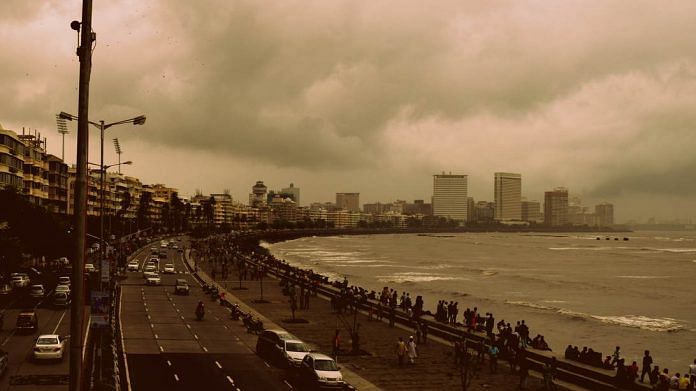Bengaluru: Mumbai, Chennai, New York, Shanghai and many other coastal cities are under a severe existential threat, a new alarming study has predicted.
The US-based Proceedings of the US National Academy of Sciences (PNAS) study has said that sea levels are rising much faster than expected due to greenhouse gas emissions, and could rise, in the worst case, by over a meter by the end of this century even if the 2016 Paris climate agreement objectives are met.
If the objectives aren’t met, the sea level could rise by over 2 meters, said the study published in the journal this month.
Such a development would mean the end of existence of several major coastal cities across the world by 2100, it said.
The study was conducted by 22 climate experts to model and estimate the effects of ice sheet melting on sea level at the current rates of greenhouse gas emissions.
What the study says
If the global Paris agreement objectives are met and the rise is curtailed to just 2°C, the effects are still deadly enough. However, if emissions are left unchecked, and continue to follow the current path, temperatures could rise up to 5°C and cause a sea level rise of 2 metres, the PNAS study found.
This could submerge large coastal cities like Mumbai, Chennai, New York, Shanghai, and Miami.
The researchers also analysed the impact of the climate crisis on global populations. They showed a scenario where nearly 1.79 million square kilometres of land would be taken over by the sea, threatening the lives of about 187 million people by the turn of the century if emissions go unchecked.
Because it is currently almost impossible to understand how the ice sheets in Antarctica and Greenland will behave in a century, scientists are as yet unclear how the climate crisis will play out beyond 2100.
Also read: Climate extremes are slashing rice & maize yields, threatening global food supply: Study
New model
The UN’s 2013 climate report predicted that global sea levels would increase by about 52 cm to 98 cm by the end of the century, but these numbers are now widely considered to be conservative and a result of inaccurate modelling.
It is also only in recent times that clouds have also started to play a crucial role in modelling as we find out more about their role in climate regulation.
The PNAS study noted that the glaciology community has helped refine the understanding and modelling of glaciers themselves in the past few years, enabling better understanding of sea level rise.
One of the primary reasons why pole-ice melting occurs faster than intuitively understood is because of a feedback loop.
Ice is white in colour and thus reflects back large amounts of sunlight, acting as a giant umbrella. But when ice melts, darker land or ocean takes the place of ice, causing not just the stopping of reflection but also increased absorption of heat. Thus, polar ice melting is exponentially catastrophic.
Also read: Our best-case climate scenario could save tons of island residents. It could also be a myth







The news on climate change and sea level rise is more grim than many of us are willing to accept. India’s commitments under the Paris Accord do not add up to anything meaningful. We should stop building coal fired power plants, move to public transport on a much larger scale. The air quality in Delhi in winter shows that we are already in an unsustainable situation.